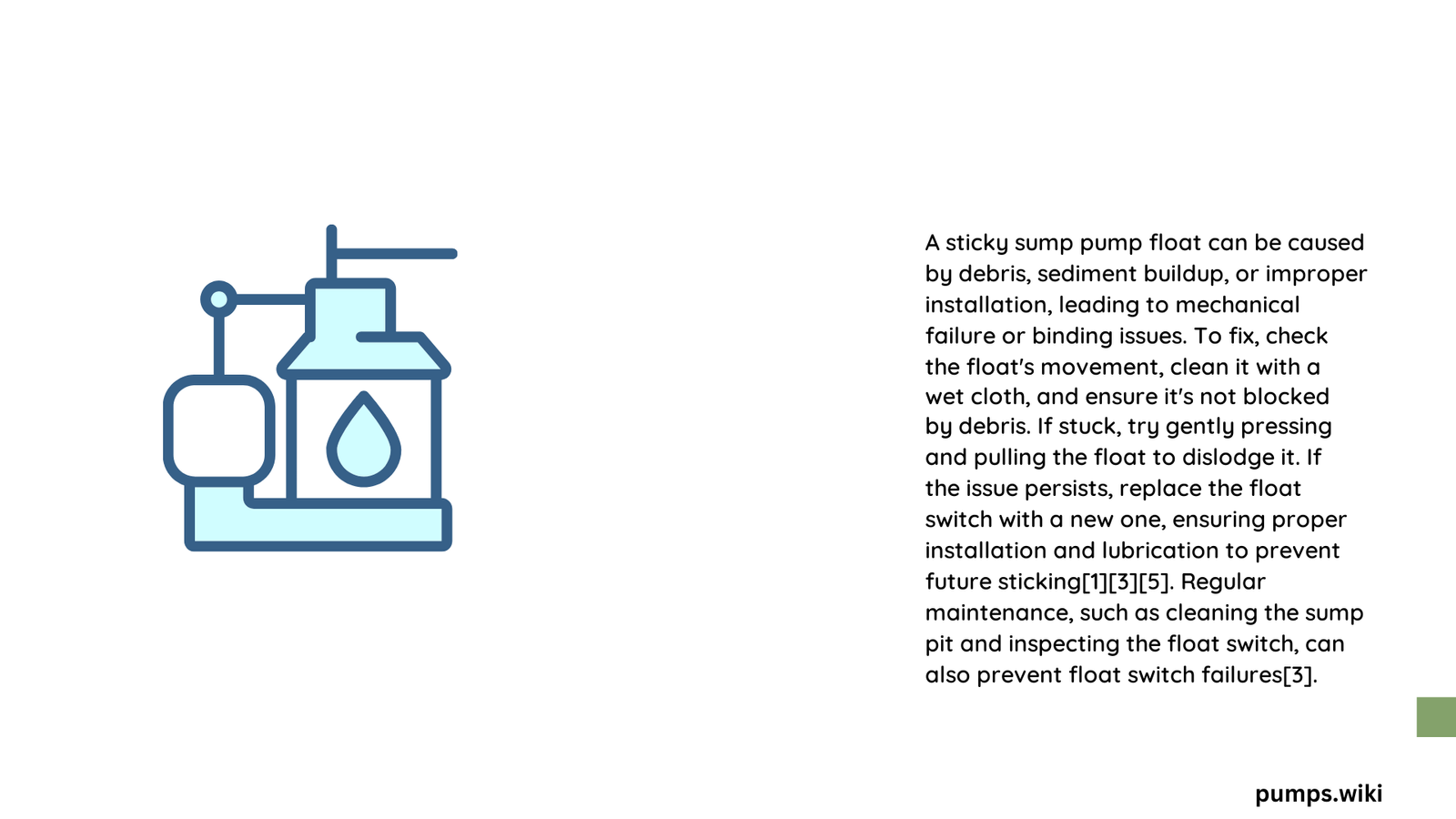A sticky sump pump float can compromise your basement’s water management system, potentially leading to flooding and water damage. When the float switch becomes unresponsive or jammed, it prevents the sump pump from activating at the correct water levels, creating a critical vulnerability in your home’s drainage infrastructure. Understanding the causes, diagnostic methods, and repair techniques is essential for homeowners seeking to protect their property from water-related risks.
What Causes a Sticky Sump Pump Float?
Mechanical Obstruction Factors
Sticky sump pump floats typically result from several key mechanical issues:
- Debris Accumulation: Sediment, dirt, and mineral deposits can restrict float movement
- Corrosion: Metal components degrade, causing friction and binding
- Mechanical Wear: Repeated use leads to component deterioration
Diagnostic Approach for Float Switch Problems
How to Identify a Malfunctioning Float?
- Visual Inspection
- Check for visible debris around the float
- Examine float arm for signs of damage
-
Verify smooth vertical movement
-
Operational Test
- Manually lift float to test pump activation
- Listen for unusual sounds during movement
- Observe if float returns to original position
Repair Strategies for Sticky Sump Pump Float

Step-by-Step Repair Process
| Step | Action | Tools Required |
|---|---|---|
| 1 | Power Disconnection | Electrical safety gloves |
| 2 | Float Switch Cleaning | Soft cloth, mild detergent |
| 3 | Debris Removal | Soft brush, compressed air |
| 4 | Lubrication | Silicone-based lubricant |
| 5 | Float Replacement | Replacement float switch |
Recommended Maintenance Techniques
Prevention Strategies
- Regular Cleaning: Quarterly sump pit maintenance
- Professional Inspection: Annual professional evaluation
- Upgrade Components: Consider corrosion-resistant float switches
Cost Considerations
Repair Expense Breakdown:
– Basic float switch replacement: $25-$50
– Professional repair service: $100-$250
– Complete sump pump replacement: $300-$600
Advanced Troubleshooting
Electrical Connection Verification
- Check wire connections for corrosion
- Test electrical continuity
- Inspect waterproof sealing
- Validate voltage requirements
Float Switch Selection Guide
Recommended Float Switch Characteristics:
– Corrosion-resistant materials
– Adjustable activation points
– Compatible with pump model
– Waterproof rating: IP67 or higher
When to Seek Professional Help
Warning Signs Requiring Expert Intervention
- Persistent float switch failure
- Recurring water accumulation
- Unusual pump motor sounds
- Visible electrical damage
Technical Specifications
Float Switch Performance Parameters
- Activation angle: 30-45 degrees
- Operating temperature: 32-120°F
- Typical lifespan: 3-5 years
- Recommended replacement interval: Every 2-3 years
Conclusion
Understanding and maintaining your sump pump’s float switch is crucial for preventing water damage. Regular inspection, proactive maintenance, and timely component replacement can significantly extend your system’s reliability.
